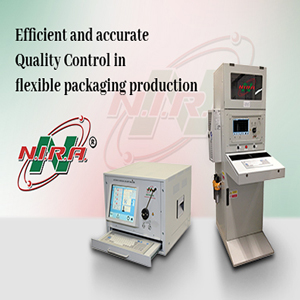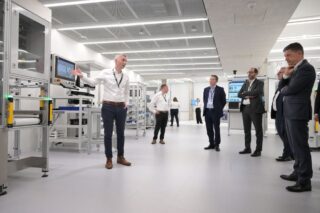Electrification is the key to climate-neutral chemistry. But it takes more than electrically heated processes. Whether direct electricity utilization, power-to-X, or combining electricity-based processes with secondary raw materials – the technology portfolio is constantly growing and still has great potential.
What do electric cars have in common with fertilizers based on green electricity? Both existed much earlier than their fossil fuel-based counterparts. And both have recently experienced a revival.
Climate-neutral Electricity
As early as 1903, Norwegians Kristian Birkeland and Sam Eyde succeeded in oxidizing atmospheric nitrogen to nitrogen monoxide in an electrically generated arc plasma, producing nitric acid and ultimately nitrate fertilizer.
Just a few years after the development of chlorine-alkali electrolysis, this was another milestone in electrochemistry. It was also sustainable, as the Norwegians used climate-neutral hydropower electricity over a hundred years ago.
However, its industrial use was short-lived. Compared to the Haber-Bosch process used from 1913 onwards, in which atmospheric nitrogen reacts with hydrogen on a catalyst to form ammonia, the electricity-hungry process from Norway had no chance economically. As a result, the process developed by Fritz Haber and Carl Bosch is now responsible for around 1.4% of global CO2 emissions, although it is still indispensable for feeding the world.
Replacing fossil fuels with climate-neutral electricity is now the order of the day. And without electrification, the goal of climate-neutral chemistry by 2050 cannot be achieved. This is another reason why researchers are once again working intensively on plasma chemistry and electrolysis processes, but also on electrical alternatives to fossil-fuelled reactors.
It is particularly worth looking at process alternatives for producing basic chemicals such as ethane. Ten of these substances, including ammonia, chlorine, and caustic soda, are responsible for around 70 % of all greenhouse gas emissions in the chemical industry.
Electrically Heating Chemical Reactors
One prominent example of reducing greenhouse gas emissions is the electrification of steam crackers. The previously mostly gas-fired cracking furnaces provide the basic building blocks for producing many basic chemicals. Heating these plants accounts for 90% of CO2 emissions, around 300 million tonnes per year worldwide.
Companies such as Dow, Shell, Sabic, Linde, and BASF are therefore pushing ahead with the development of electrically heated steam crackers. A corresponding demonstration plant on a large-scale cracker is due to go into operation in Ludwigshafen in 2024. However, the goal of climate-neutral chemistry cannot be achieved with the electrical heating of processes alone.
The German “Roadmap Chemistry 2050”
The “Roadmap Chemistry 2050″ study published by DECHEMA and FutureCamp Climate in 2019 used Germany as an example to show that climate-neutral chemistry can only be achieved by closing material cycles, CO2-free hydrogen, and new, electricity-based processes.
The German Chemical Industry Association (VCI) and the Association of German Engineers also recently analyzed how the transformation of the chemical industry could work in 2023 and evaluated three scenarios on the way to a climate-neutral chemical industry in 2045 in the C4C study.
What they all have in common is an enormous demand for electrical energy. It is between six and ten times higher than before and also generated in a climate-neutral way. Water electrolysis in particular has an impact here. But in the hype surrounding green hydrogen, another success factor is usually overlooked. Secondary raw materials, including plastic waste or biomass, are also essential.
A combination of alternative raw materials and the electrification of chemistry is therefore needed. In the example of steam crackers, this could be an electrically heated cracking furnace that is fed not with naphtha from crude oil, but with pyrolysis oil from plastic waste or synthetic light petrol.
Co-electrolysis: Synthesis Gas in One Go
But electrochemistry also has potential. Current developments aim not only to make electrolysis processes more efficient but also to utilize them beyond hydrogen and chlorine.
For example, the Kopernikus project P2X is researching co-electrolysis. In 2023, electrolysis specialist Sunfire delivered a system for the Energy Lab 2.0 at the Karlsruhe Institute of Technology (KIT). Synthesis gas is produced from water vapor and carbon dioxide in just one step using green electricity.
The mixture of hydrogen and carbon monoxide forms the basis for many chemicals and alternative fuels. The key feature here is that the proportions of hydrogen and carbon monoxide in the synthesis gas can be adjusted. They depend on the requirements and desired downstream products.
The PlasCO2 Project
However, co-electrolysis is only one way of producing synthesis gas. The chemical company Evonik is taking a different approach with the PlasCO2 project. Hydrogen and carbon dioxide are converted into synthesis gas in a plasma reactor. It is then used to produce C4 chemicals.
The process has little to do with the energy-intensive arc plasma mentioned at the beginning. The highly reactive plasma – a gaseous mixture of ions and free electrons – is produced at temperatures below 100 °C. However, the Birkeland-Eyde process can also be re-evaluated on this basis. The EU project Mapsyn (Microwave, Ultrasonic, and Plasma-assisted Syntheses) has succeeded in using cold plasma and halving the energy required to produce nitrogen oxide.
Such developments are also important because they could provide the key to an as-yet unsolved problem of electrolytic hydrogen production on a large scale: The utilization of the oxygen produced during water electrolysis. As the focus of water electrolysis is primarily on the production of hydrogen, the by-product oxygen produced at the same time has so far mostly been released into the environment unutilized. By utilizing oxygen as a valuable product, however, the overall efficiency and cost-effectiveness of the electrolysis process can be improved. And its competitiveness compared to fossil alternatives increased.
In addition to its use as an industrial gas or for enriching activated air in wastewater treatment, the by-product is also of interest in many chemical syntheses. This includes the fertilizer production mentioned at the beginning. Electrolyzers will not only be operated at large chemical and refinery sites in the future but also directly at wind turbines at sea. Therefore, a broad technology portfolio is needed for the utilization of hydrogen and oxygen on site.
From Heat Pumps to Flexible Production
There is also further potential for the electrification of the chemical industry on the heating side. Heat pumps have already been used in building technology for many years. Machines based on the Carnot process make it possible to utilize ambient heat and waste heat from plants to heat buildings. This makes it possible to generate three to five-kilowatt hours of thermal energy with one kilowatt hour of electrical energy.
The temperature level of the generated heat has now been increased to around 130 °C. This is of interest for providing process heat in the chemical industry. Unlike processes used in basic chemicals, this can also be utilized in specialty chemicals on the path to climate neutrality.
However, if electricity increasingly determines not only the energy source but also the raw material side of chemical value chains, then another paradigm will be shaken: its continuous availability. Unlike natural gas or naphtha, electricity cannot yet be stored in the required quantities. Supply and demand must always be kept in balance, otherwise, there is a risk of grid fluctuations and even shutdowns.
This problem is currently becoming increasingly clear with the expansion of wind energy and photovoltaic capacities. In 2022, 8.1 terawatt hours of electricity from renewable energies had to be curtailed in Germany alone because the oversupply jeopardized grid stability.
The Kopernikus Project SynErgie
The Kopernikus project SynErgie is therefore investigating how chemical production can be more flexible so that electricity demand can be increased or reduced in a short space of time.
Some operators are already utilizing this demand-side management today. For example, by switching steam generation from gas to electricity when the exchange electricity price falls below the gas price. This can also be done on sunny and windy days. The development of flexibly switchable electrochemical processes could be a further step towards demand-side management. SynErgie mentions, for example, chlor-alkali electrolysis and the extraction of carboxylic acids.
However, such concepts are limited by economic factors – above all the pressure for capital efficiency, which is higher when a plant is operating at full capacity than at partial load. Finally, the financing aspect also hinders the implementation of new technologies on a technological scale. Given rising interest rates and energy prices, which put pressure on revenues, it has become much more difficult for chemical companies to demonstrate the economic viability of new plant projects – including those for defossilisation and electrification.
These examples show that electrification is an important component of a future climate-neutral chemical industry. But it is not a panacea: only a holistic approach that utilizes sufficient quantities of climate-neutral electricity and secondary raw materials will make the ambitious net-zero target possible. And it will also be worthwhile to re-evaluate technologies that were once rejected. This includes fertilizer production from electricity, under the changed framework conditions.
![[ACHEMA 2024] The Chemical Industry Is Going Electric](/wp-content/uploads/sites/3/Featured-5-22-1000x625.png)










